Text
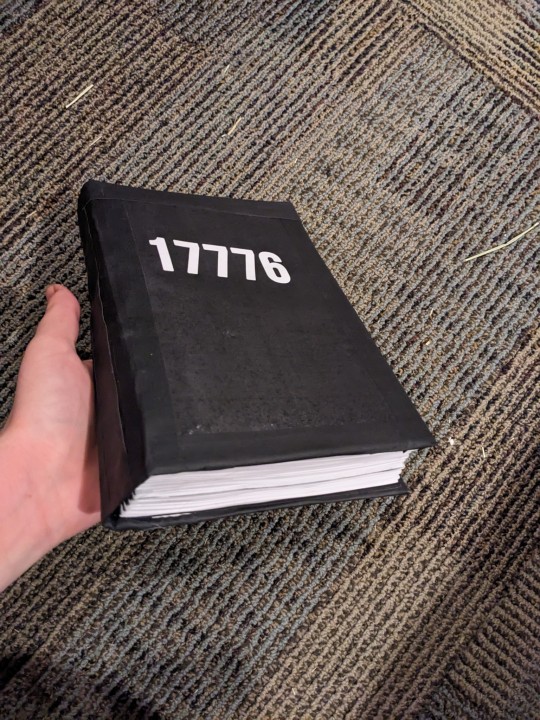

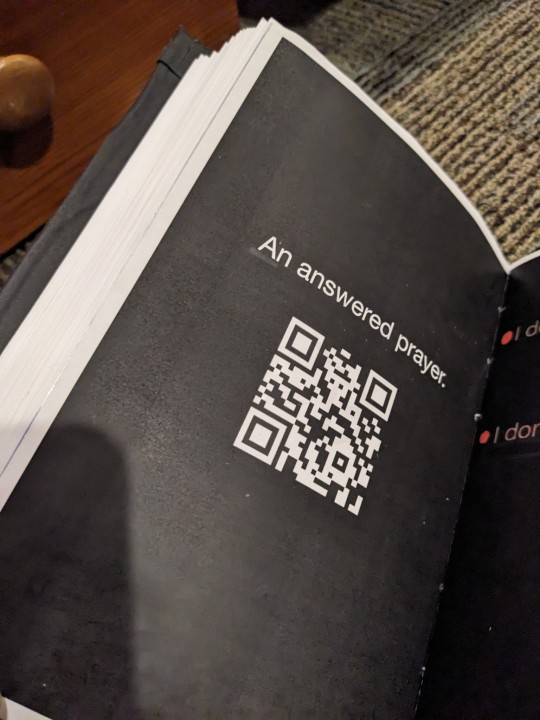

I'm like super normal and not unhinged in the slightest (I spent 3 days formatting, printing, and binding a niche internet story about sci fi football into a 280 page physical book)
23K notes
·
View notes
Text

no thoughts behind these eyes
Another pet portrait I've made as patreon prints! This one features Maj's little friend, thank you so much for providing me such lovely refs of him <3
182 notes
·
View notes
Text





Went to the botanical garden light show at the wausau botanical gardens. It rained
3 notes
·
View notes
Text
Fish of the Day
Today's fish of the day is the Alabama Cavefish!
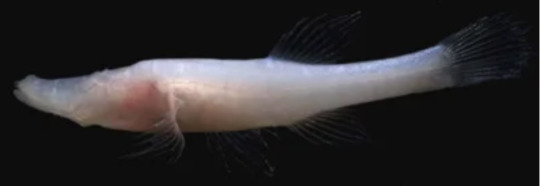
The Alabama Cavefish, scientific name Speoplatyrhinus poulsoni, is known for being one of the rarest troglobitic fish species in North America. Discovered in 1967, by the time the alabama cavefish was scientifically described in 1974, there were only about 100 fish left. On any visit to the cave, only about 10 fish have ever been seen, but they are consistently different fish, so the estimated number is a little under 100, making them critically endangered. This also makes them a possibility for the rarest cavefish in North America!
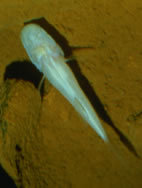
Despite the large waterways connecting caves in Key Cave National park to several other cave systems, the Alabama cavefish has restricted itself to only one cave for reasons we don't understand. A search of over 120 caves in the surrounding area revealed no populations or signs of populations. With a range consisting only of Key cave in Lauderdale county, Alabama; these fish are constantly faced by the threat of extinction, and most of their worries are based on the limited home range, and waters entering the cave. Any water with chemicals, especially fertilizers and other agricultural runoff are a large concern. That along with competition from more aggressive cavefish, and predation from nearby crawfish. Due to their living situation and delicate population, much is unknown about these fish. But, let us go over what we do know!

The diet of the Alabama cavefish consists mostly of invertebrates found in the caves: copepods, isopods, smaller cavefish, spiders, beetles, and anything else it can find that will fit in its mouth. They grow up to a size of 2-3 inches in length. They have no eyes or pigment, and hunt solely based off of sensory protrusions that dot the head and sides, a trait evolved to handle the almost complete darkness. These fish have no breeding season, and instead breed based off of the environmental signal: when the caves flood in the winter and spring. Insufficient flooding can lead to years where no breeding or spawning occurs, and when it does females carry few eggs, and even fewer eggs hatch. Their lifespans, based off of the lifespan of Northern cavefish, are an estimated 5-10 years.
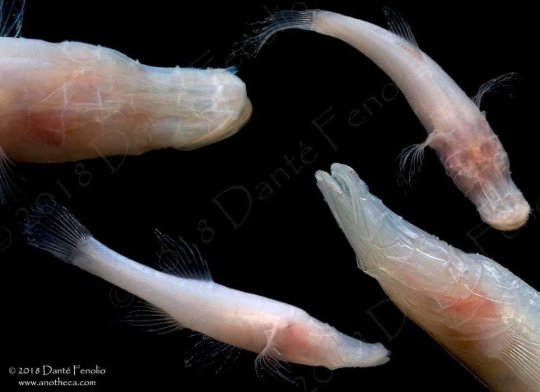
709 notes
·
View notes
Text

The Gentleman Pirate
A comm for the very kind Fated13th I've done some time ago <3 it features Beau, friend's cat and was a gift for them! It was fun to make such a twist to my usual pet portraits, especially since I'm a big fan of Stede too <3
587 notes
·
View notes
Text





A Water Bird Feathursday
This week we present more waterfowl from our 1948 publication Birds of the British Isles with text and wood engravings by British author and wood engraver Eric Fitch Daglish (1892-1966), published in London by J. M. Dent & Sons in a limited edition of 1500 copies. Shown here from top to bottom are:
European Herring Gull (Larus argentatus)
Great Snipe (Gallinago media)
Barnacle Goose (Branta leucopsis)
Mallard or Wild Duck (Anas platyrhynchos)
Atlantic Puffin (Fratercula arctica)
Birds of the British Isles is a donation from our friend, Wisconsin wood engraver Tony Drehfal.
View more posts from this volume.
View more Feathursday posts.
32 notes
·
View notes
Text
Archery: expectations vs reality vs reality again! REJECT THE BORING VERSION OF REALITY AND SUBSTITUTE THE FUN ONE!
You can find the College of Arrows here join us and be an Archery Bard! Or something
3K notes
·
View notes
Text

Newly hatched brush turkey chick
By: Alan Root
From: The Fascinating Secrets of Oceans & Islands
1972
237 notes
·
View notes
Text
A Hole in the ACE: Anderson, Caveney, Egbert
[This is a deep dive into the pages of Harry Anderson: Wise Guy by Mike Caveney, seen on Homestuck pages 629-630, and its role in the story. About 2.5k words, somehow. A transcript of these pages can be found here.]

=> Read book. Be the wise guy.
Harry Anderson, born in 1952, was a real magician and comedian who achieved mainstream television success in the 1980s and 90s with starring roles in sitcoms and appearances on Saturday Night Live. A street magician since his youth, he continued to tour and perform magic shows well into the 2000s, and opened both a magic shop and a nightclub in New Orleans with his second wife. Wise Guy is the name of a one-man show he presented in his own nightclub beginning in 2005, although he may have used the phrase earlier.
Mike Caveney, born in 1950, has similarly been a magic enthusiast since childhood. As well as performing, he has written over 50 books about magic and its history, including Magic, 1400s-1950s (2009) and of course Harry Anderson: Wise Guy (1993). This is a real book documenting the secrets behind Anderson’s most famous tricks, interspersed with personal anecdotes. John Egbert is lucky to own this – it’s currently out of print, and secondhand editions sell for over $100.
In my attempts to find an online copy of Wise Guy, I found a PDF that billed itself as the book’s introduction, but quickly devolved into a plot summary of Stephen King’s IT. While clearly not the actual introduction, I later learned that Anderson played Richie Tozier in the 1990 television adaptation of IT, which at least explains the connection.
Unfortunately, very little of Wise Guy’s text is available online. One excerpt survives, and accompanies several online publishers’ listings for the book – for example, here. This excerpt describes Harry’s trick ‘The Finger Chopper,’ with his early-career assistant who happened to be missing half a finger. I am almost certain that Andrew Hussie doesn’t own a copy of this book, but that they found this real excerpt, and used it to write their own entirely fake pages for Homestuck.
Some specific phrases appear in both the real excerpt and the Homestuck pages: ‘Here is a perfect example of how Harry could…’ ‘the close up room at the Magic Castle’ and even the full paragraph ‘[he] had one of those little wooden finger choppers that Micky Hades used to sell. The kind where the blade could be removed and clearly shown. It was a very convincing little guillotine that did not look like a novelty store toy. Harry would get a guy to examine the chopper and then cut a cigarette in half. Then he held the guy’s hand up and told this silly story.’
The Magic Castle is a famous performance venue that Anderson really performed at, however it's located in Los Angeles, not New Orleans as the Homestuck version suggests.. Micky Hades is another magician 25 years Anderson and Caveney’s senior, best known for writing and publishing books and magazines on magic. An unverified primary source says that he invented the Finger Chopper while working deep underground in the freezing cold Yellowknife gold mines, which is definitely cool if true.
The rest of what's in Homestuck is invented. In Caveney’s book, Anderson’s trick is successful, no audience members are harmed, and Anderson is presented as a charismatic entertainer in control of the crowd. In Hussie’s version, Anderson’s trick goes horribly wrong, and is presented as overconfident, unpleasant, and ridiculous. There’s a flip back and forth from praising and criticizing Anderson, painting he and Caveney as jilted former business partners who maintain professional respect, or toxic ex-lovers who can’t let each other go.
Hussie also refers to a ‘two foot, six inch height differential’ between Anderson and Caveney, with Anderson implied as the shorter party. Anderson was 6’4”, and while I can’t find a source for Caveney’s height, I think it would have been well documented if Caveney was almost nine feet tall.

Hussie’s version states that once Anderson’s finger chopper trick was successful, he achieved ‘fame, fortune and the crowning position in the television judiciary.’ This refers to his starring role on the sitcom Night Court as Judge Harold T. ‘Harry’ Stone, a 34-year-old night court judge appointed to the bench when none of the other applicants were available to answer their phones. Harry’s methods in the show are unorthodox, including flipping a (secretly double-headed) coin to decide if a woman should go to jail, suggesting in 1984 that the three members of a love triangle try polyamory, and giving a man dressed as Santa information from two teenagers’ government records so that ‘Santa’ could trick the teens into believing in him.
I’d never heard of this show before reading Homestuck, and neither has Rose Lalonde, but John mentions it on p.636. The show appears fairly well received during its original run, winning eight Primetime Emmys, including four consecutive Best Supporting Actor wins for John Larroquette (who withdrew his name from the ballot for future years). I watched a few episodes before making this post and thought the pilot was really great, with subsequent episodes either not living up to its promises, or already feeling stale. It’s over-acted in a way that makes it feel older than its airdate, and definitely tracks as a cheesy thing for John Egbert to enjoy.
The other name mentioned in Hussie’s edition – Blind Willie ‘Buttermilk’ Stubbs – is not a real person, but a legendary jazz musician from Problem Sleuth. This is most likely a reference to the real 1900s blues musician Blind Willie McTell, or the Bob Dylan song of the same name. However, there’s an outside chance it could be another Stephen King connection, as he has a 1994 novella named Blind Willie.
The second trick described in Homestuck, ‘A Hole in the Ace,’ doesn’t appear to be a real Anderson trick. It’s not on this list of the book’s chapter titles, and while I have found evidence of Anderson tearing up cards as part of tricks, I couldn’t find anything about him punching holes. In general this second page is more artistic license and less connected to Anderson’s real life than the first. It seems like this hole-punch trick was invented by Hussie purely to give John the inspiration to advance his alchemy. Narratively this works really well, because John’s not somebody who would come to these ideas by careful thought, but it’s also not satisfying to have Rose always give him the answers.
We’ve seen another Harry Anderson property in John’s room – the fictional video game Call My Bluff, seen on the CD rack (p.31). Although Anderson never had a show named Call My Bluff, in 2000 he hosted an unsold pilot episode of What’s My Line? for Mark Goodson and Bill Todman. Goodson & Todman were famous for creating a variety of TV game shows, including 1965’s Call My Bluff. Is this a coincidence? I genuinely couldn’t tell you.
I really love what Hussie has done with this book. I’d say this qualifies as a transformative work – taking the real text and premise of Wise Guy and mixing it with established MSPA lore, mimicking Caveney’s original writing style while using it to paint a far more absurd picture of Anderson, using it to advance the plot while still feeling like this book could really exist, at least in the Homestuck universe. It shows how much work gets put into Homestuck, even while some plot elements (possibly even John’s decision to read the book) are decided by readers.

=> Read Colonel Sassacre’s text.
Wise Guy is only one of John’s two favorite books. The other of course is Colonel Sassacre’s Daunting Text of Magical Frivolity and Practical Japery, and we’ve now seen inside both. They’re fairly different overall. Sassacre’s is a lot more overwrought and soaked in Southern stereotypes, written like it’s trying to squeeze in as many old-timey Southern words as possible, while Wise Guy focuses on telling a story and creating a character. Both texts lean into some grosser imagery than Homestuck usually goes for, with Sassacre’s describing ‘wriggling regency of rubber bugs, plastic parasites, squirming serpents, pliable pests…’ and Wise Guy mentioning ‘a bloody sausage sized piece of a guy’.
The most direct link between the texts is the uncommon phrase ‘listless octoroon,’ which appears in both. Used in the mid to late 1800s, an octoroon was a social and sometimes legal word for somebody who was one-eighth Black. It’s an offensive term that definitely should not be used to describe a real person, and I don’t think it’s funny in fiction either. It reads like another example of ‘post-racial humor’ where Hussie, a white author, uses Blackness as a joke due to a mistaken belief that racism is a thing of the past. This isn’t the first time this specific brand of humor has appeared in Homestuck, and it’s worrying that it’s becoming a pattern.
Sassacre’s, the ‘family tome of humor’ passed down through Egbert generations, focuses on pranking friends and family members, taking those around you by surprise. Wise Guy, which appears to be John’s own interest, is about performing tricks for an audience – both descriptions of the trick and of the mannerisms surrounding the trick that make it successful, leaning into the draw of the professional magician and the cautionary tale of their failures.
Colonel Sassacre’s relevance to Homestuck has so far been as a physical object. It’s what killed Nanna in her human life, it’s been a heavy item in John’s sylladex that he’s used to set off smoke pellets and slay an imp, it was teased as a Tier 2 sprite prototype, and it was found hidden inside Dad’s safe. In contrast, Wise Guy’s relevance has been about the text inside the book, and John’s interpretation of that text.
Which of course makes me wonder about other books we’ve seen in the story. Data Structures for Assholes, the second book of John’s that’s about A-holes, is clearly written to be so over-the-top it becomes funny (like Sassacre’s) but is used for the same purpose as Wise Guy, teaching John a new game mechanic that helps him advance his own story. Other books we’ve seen but haven’t opened are The Fatherly Gent’s Shaving Almanac, found in Dad’s safe, and the writing journals Rose keeps under her bed. Finally, we’ve seen inside Rose’s Grimoire for Summoning the Zoologically Dubious, however as this book is written in the eldritch tongue, it’s hard to offer meaningful insights.
All of these books have been highlighted when they appear, and are more than just a spine among a bookshelf collection. My guess is that all of these will become relevant to the story at some point, whether as objects or as texts.

=> John: Punch card.
Wise Guy first appeared on p.8 of Homestuck, as part of the contents of John’s MAGIC CHEST (now and forever on the roof), which also contains a picture of Anderson stuck to the inside of the lid. John being an ‘aspiring AMATEUR MAGICIAN’ came up even earlier, on p.4. John claims to love this book, which is ‘one of [his] favorite books of all time’ (p.123), but in truth he only likes specific aspects of the book. In real life, Caveney had great respect for Anderson and wrote his book as a tribute, but this isn’t true in Homestuck – Caveney’s ‘ambivalent attitude toward your favorite magician in these anecdotes always struck [John] as a little weird,’ suggesting that John doesn’t enjoy criticism of his heroes and doesn’t want to engage with the more complex and emotional parts of the text.
John ‘mostly like[s] to look at the diagrams for all the cool tricks.’ Given his aspirations, it makes sense that he’d use it as a manual similar to Sassacre’s instead of a biography – but he’s not reading the book as the author intended. If he did, he’d like it less. In most webcomics, any text is contained within the panels themselves, and any blocks of text below are commentary that isn’t necessary to enjoy the joke or story. MSPA is fairly unique in having narrative text that’s story critical, and I wonder if there are some Homestuck readers who just look at the pictures and think the text is ‘weird’ or extraneous. John’s method of reading Wise Guy fits with the fact that he flits from one thing to another, giving up quickly when something is too much effort, whether that’s hole punching through several cards at once or reading stories that are critical of his hero and hard to understand – but it could also be meta-commentary on readers of Homestuck.
John’s relationship to magic, both past and present, is something I’d really like to see explored in more depth. Now that he has unlimited captchalogue cards and engages with them as physical objects, the possibilities for card tricks are off the charts – and the reasons John likes magic aren't yet known. A magician is a showman, somebody who surprises and delights an audience, but can only do this by concealing much of what they’re doing. A magician has to be a master of their craft and in control of the situation both socially and technically. Magic is believed to be among the oldest performing arts, and while magicians are often thought to be secretive about their tricks, Wise Guy is just one of a huge number of books containing detailed instructions for magic.
John's not usually the character we'd expect to want an air of mystery around himself, but he often tries to hide his emotions, with various degrees of success. He also likes the idea of coding, which is a type of magic - producing an effect (a website) while concealing the methods (lines of code) that went into it. There's not much he's good at yet, but he has the manual dexterity to play piano well, which could translate into sleight of hand tricks. I can see why, as someone who struggles with basically everything, John likes the idea of having a high degree of mastery over something and of making it look effortless. I also see how someone who feels like they're always performing their role in the world, instead of actually embodying it, would gravitate towards being another kind of performer. However, that's just some initial instincts, and as I keep reading and re-reading I'll be on the lookout for more connections between John and stage magic.
Additionally, John now has access to real and powerful magic via alchemy. This is magic that can’t fully be explained by sleight of hand and diagrams in a book, and it’s magic that can provide a shortcut to achieving goals, conjuration instead of illusion. Now that John has this power, will he become disillusioned with the artifice of practical magic, or will he lean into it even harder? Will there continue to be connections between alchemy and the tricks John already knows? Instead of always putting that bunny back in the box, will he start pulling that bunny out of the hat?
Finally, it is surprising that John’s never talked to Rose about Harry Anderson before. Given the depths of his interest, I’d expect it to have come up, but Rose is clueless. When explaining who he is, John says ‘EB: he's awesome EB: that's really all there is to say on the matter!’ which directly calls back to what Dave has said about puppets on p.537. In Dave’s case, he’s trying to convince himself he thinks this, but it’s clear he actually doesn’t. Is it possible that deep down, John actually doesn’t like Harry Anderson? Is magic too close to Egbert family traditions of clowning for John to really feel good exploring it? Is John’s greatest trick of all convincing us that he loves magic?
20 notes
·
View notes
Text



Alexandrine Parakeet!
Instagram|inprnt|Cara|Behance
158 notes
·
View notes
Text








The Tale of the Priest and of His Workman Balda (1940) dir. by Panteleimon Sazonov
43 notes
·
View notes





